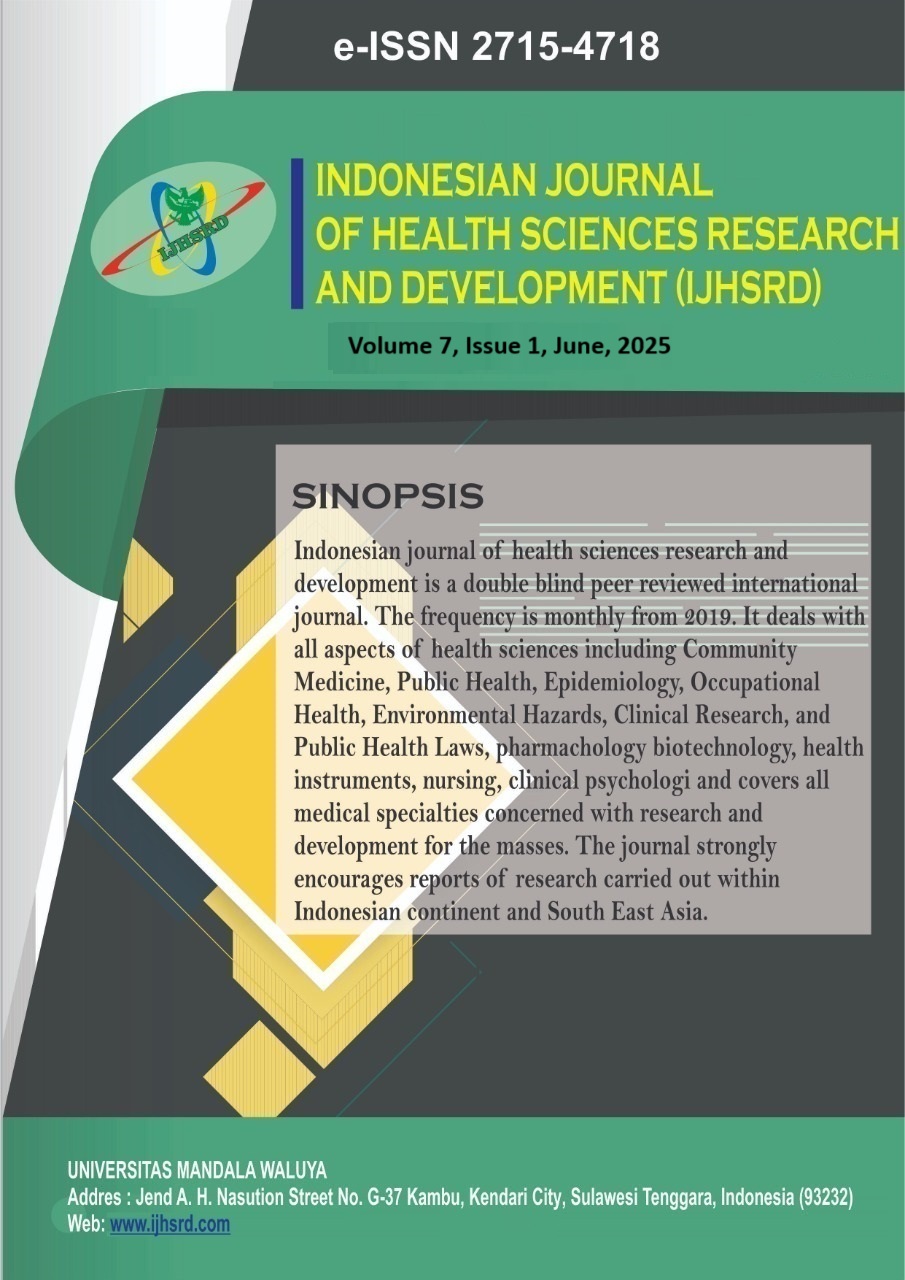Main Article Content
Abstract
Background: Moringa oleifera, being one of the 14 species of family Moringaceae, is an herbal medication that is well-known for its many therapeutic applications. Worldwide, moringa has been used as a traditional herbal medications for a variety of conditions, including anemia, skin infections, blackheads, anxiety, bronchitis, catarrh, chest congestion, asthma, blood impurities, cholera, glandular, swelling, headaches, conjunctivitis, cough, diarrhea, eye and ear infections, fever, hysteria, joint pain, pimples, psoriasis, respiratory disorders, scurvy, semen deficiency, sore throat, sprain, tuberculosis, intestinal worms, lactation, diabetes, and pregnancy. This study was done to determine qualitatively the phytochemicals and antimicrobial potentials of the leaf extracts of moringa oleifera.
Methods: Cold extraction (maceration) was used using 95 % ethanol as extracting solvent. The phytochemical screening was done using standard procedure/methods (to detect alkaloids, flavonoids, terpenoids, steroids, tannins, saponins, glycosides, and polyphenols), while antimicrobial potentials was done using disc diffusion method. The phytochemical screening showed the presence of alkaloids, terpenoids, flavonoids, tannins, saponins, polyphenols, steroids, and glycosides.
Results: he results also showed that moringa was active against antibacterial (S. aureus and E. coli) and fungal (Rhizopus and A. niger) isolates tested, with petroleum ether extract showing greater activity (larger zones of inhibition), followed by methanol, acetone, and chloroform extracts, respectively
Conclusion: We have concluded that Moringa oleifera can be utilized as a safe and affordable plant antimicrobial agent since it contains active components with antibacterial properties, including flavonoids, tannins, saponins, alkaloids, phenolics, and triterpenoids.
Keywords
Article Details

This work is licensed under a Creative Commons Attribution-ShareAlike 4.0 International License.
References
- 1. Febri Arifiati R, Sri Wahyuni E, Utami P. Dampak Kualitas Tidur Terhadap Kualitas Hidup Lansia Di Desa Gagak Sipat, Ngemplak, Boyolali. Jintan J Ilmu Keperawatan. 2023;3(1):1-7. Doi:10.51771/Jintan.V3i1.439
- 2. Shamim, S.A., Lubna F. 2018. Medicinal properties of Moringa oleifera (Sahajana): A review. The Pharma Innovation Journal, 7(10): 311-316
- 3. Adebayo, F., Abdus-Salaam R.B. 2022. Comparative Assessment of Dried Moringa Leaves of Nigerian Ecotype. Afr. J. Food Agric. Nutr. Dev., 22(6): 20721-20736 https://doi.org/10.18697/ajfand.111.22110
- 4. Ahmad, F., Abdull, R., Muhammad, D.I., Saie, B.K. 2014. Health Benefits of Moringa oleifera. Asian Pac. J. Cancer Prev, 15(20), 8571-8576. DOI: http://dx.doi.org/10.7314/APJCP.2014.15.20.8571
- 5. Stevens, G.C., Baiyeri, K.P., Akinnnagbe, O. 2013. Ethno-medicinal and culinary uses of Moringa oleifera Lam. in Nigeria. Journal of Medicinal Plants Research, 7(13), 799-804.
- 6. Ndubuaku, U.M., Uchenna, N.V, Baiyeri, K.P., Ukonze, J. 2015. Anti-nutrient, vitamin and other phytochemical compositions of old and succulent (Moringa oleifera Lam) leaves as influenced by poultry manure application. Afr. J. Biotechnology, 2015; 14(32): 2501-2509
- 7. Abubakar, B.Y., MuA’zu, S., Khan, A.U., Adamu, A.K. 2020. Morpho-anatomical variation in some accessions of Moringa oleifera Lam. from Northern Nigeria. African Journal of Agricultural Economics and Rural Development, 8 (10), 001-007
- 8. Popoola, J.O., Obembe, O.O. 2013. Local knowledge, use pattern and geographical distribution of Moringa oleifera Lam. in Nigeria. Journal of Ethnopharmacology, 150(2013): 682–691.
- 9. Ishiekwene, I.C., Dada, T.E., Odoko, J., Nwose, E.U. 2020. Promoting African indigenous vegetables and its medical nutrition properties: A mini-narrative review based on Ukwani communities of Delta State Nigeria. Integrative Food Nutrition and Metabolism, 6(256).
- 10. Stevens, C.O., Ugese, F.D., Baiyeri ,K. P. 2015. Utilization Potentials Of Moringa Oleifera In Nigeria: A Preliminary Assessment. International Letters of Natural Sciences, 40, 30-37
- 11. Gopalakrishnan, L., Doriya, K., Kumar, D.S. 2016. Moringa oleifera: A review on nutritive importance and its medicinal application. Food science and human wellness, 2016 5(2), 49-56.
- 12. Ismail, A. H., Idris, A.N., Amina, M. M., Irahim, A. S., Audu, S. A. (015. phytochemical studiesnand thin layer chromatography of leaves and flower extract of senna siamea lam for possibile biomedical applications. Journal of pharmaconosy and phytothreapy, 7(6), 18-26.
- 13. Balamurugan, V., Sheein Fatima, M. A., Velurajan, S. 2019. A guide to phytochemical analysis. African journal of Phytochemistry, 5(1), 236-245.
- 14. Najila, A. B. 2014. Phytochemical screening and antimicrobial activity of scoparia dulcis extract. Asian journal of pharmaceutical and clinical research, 7(2), 21-27.
- 15. Nonye, O. E. 2014. Phytochemical analysis and antimicrobial screening of Moringa oleifera leaves extract. The International Journal of Engineering and Science, 3(3), 32-35.
- 16. Mensah, J.K., Ikhajiagbe, B., Edema, N.E., Emokhor, J. 2012. Phytochemical, nutritional and antibacterial properties of dried leaf powder of Moringa oleifera (Lam) from Edo Central Province, Nigeria. J. Nat. Prod. Plant Resour., 2 (1), 107-112
- 17. Shakeela, K., Muhammad, A., Shahid, M., Waleed, A., Frazana, S., Waseem, K. 2023. Nutritional and Phytochmical Screening of Moringa oleifera Leaf powdere in aqueous and ethanol extrcats. International Journal of Food properties, 1, 2338-2348.
- 18. Raubilu, I.A., Isah, U., Ahmad, M.A. 2019. Antimicrobial Activity of moringa oleifera: A short review. Bayero Journal of Pure and Applied Sciences, 12(1),128-132.
